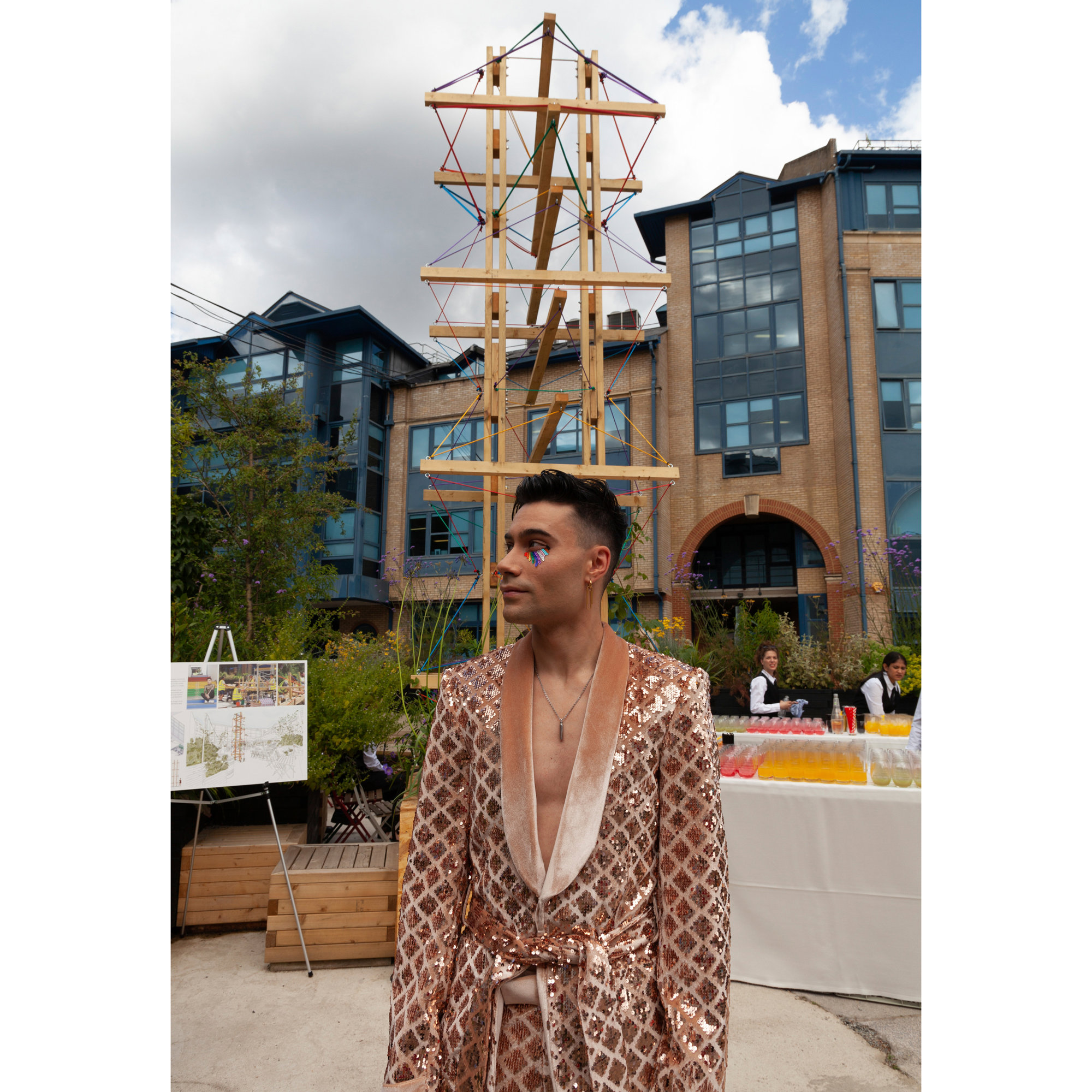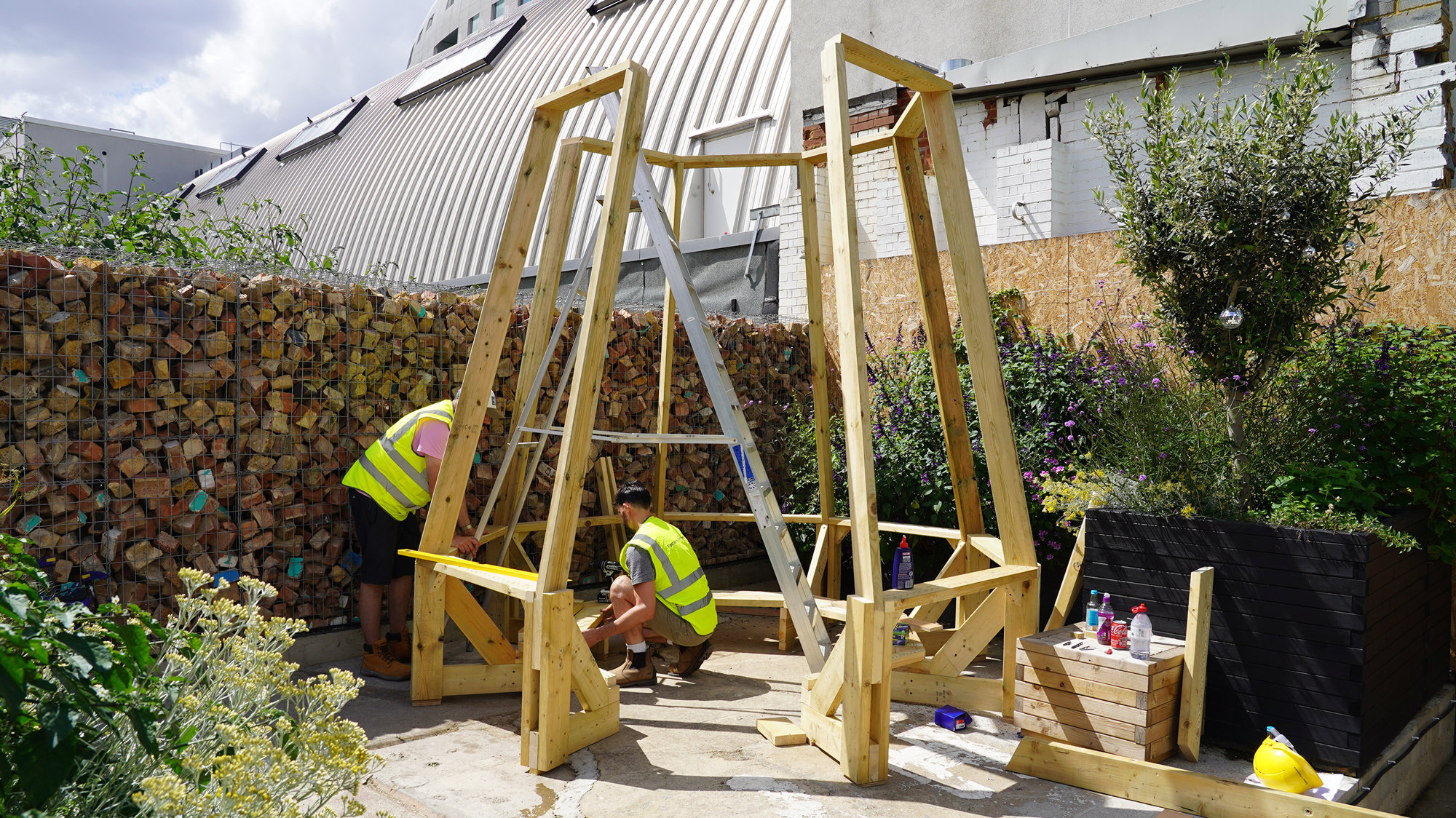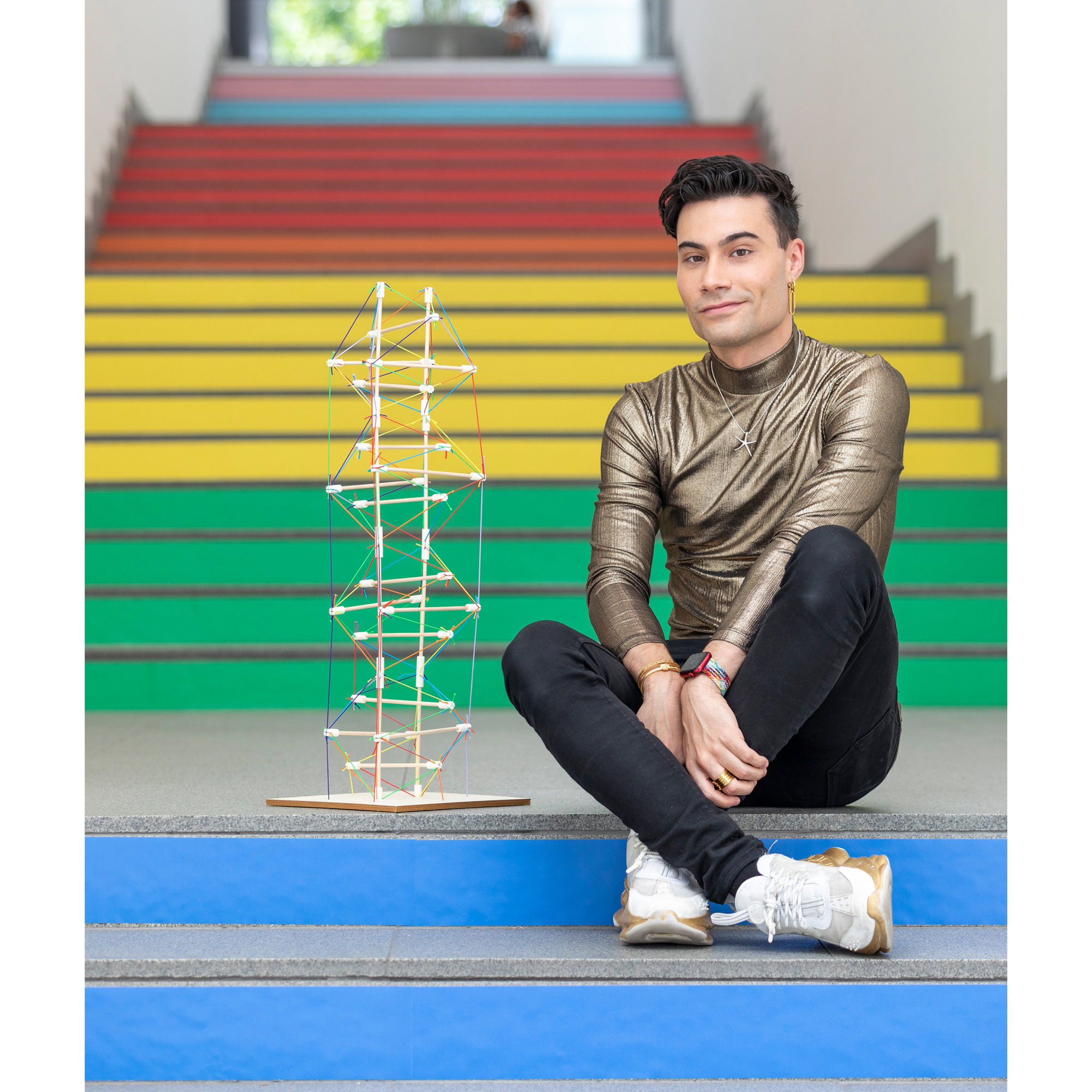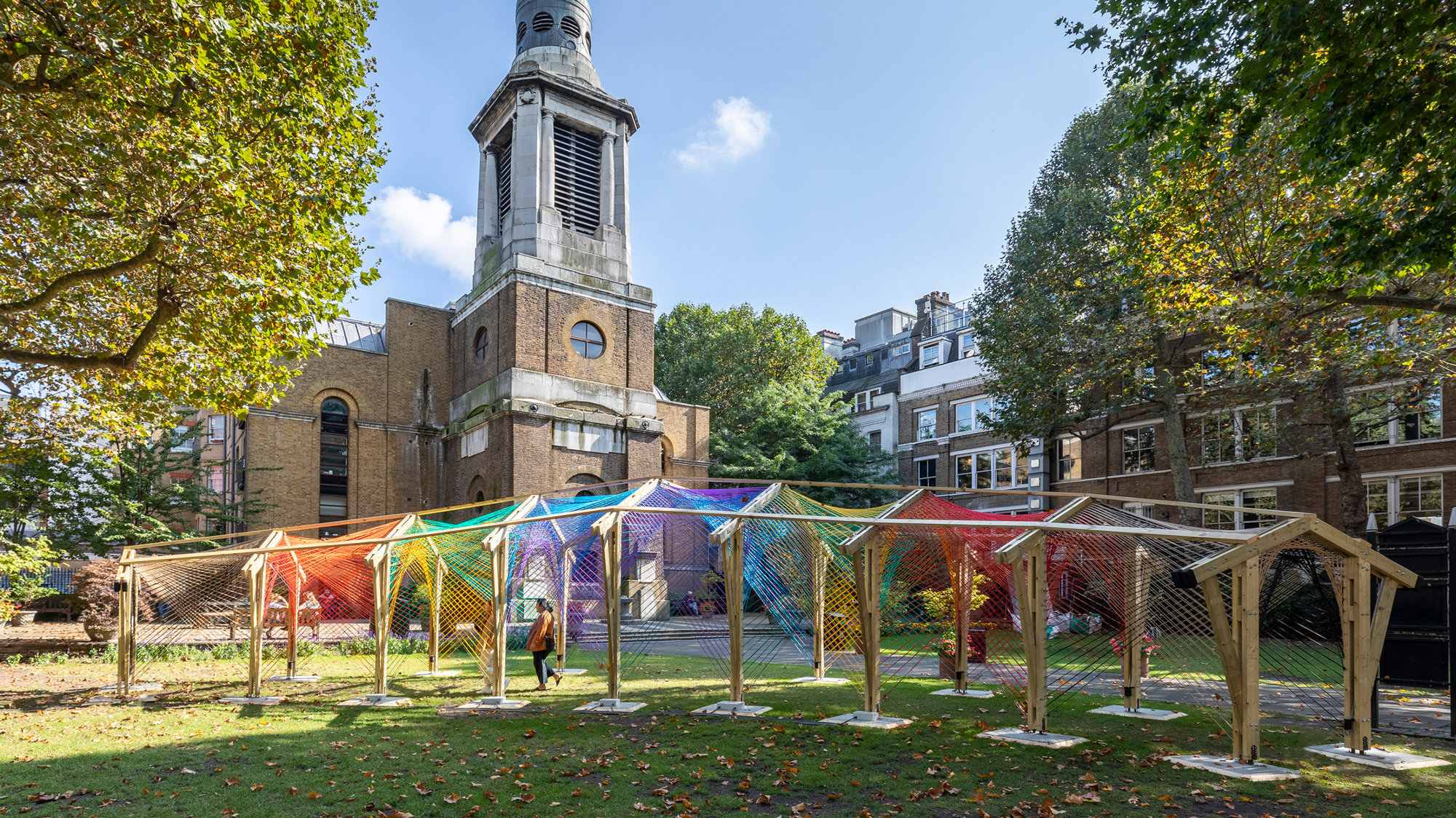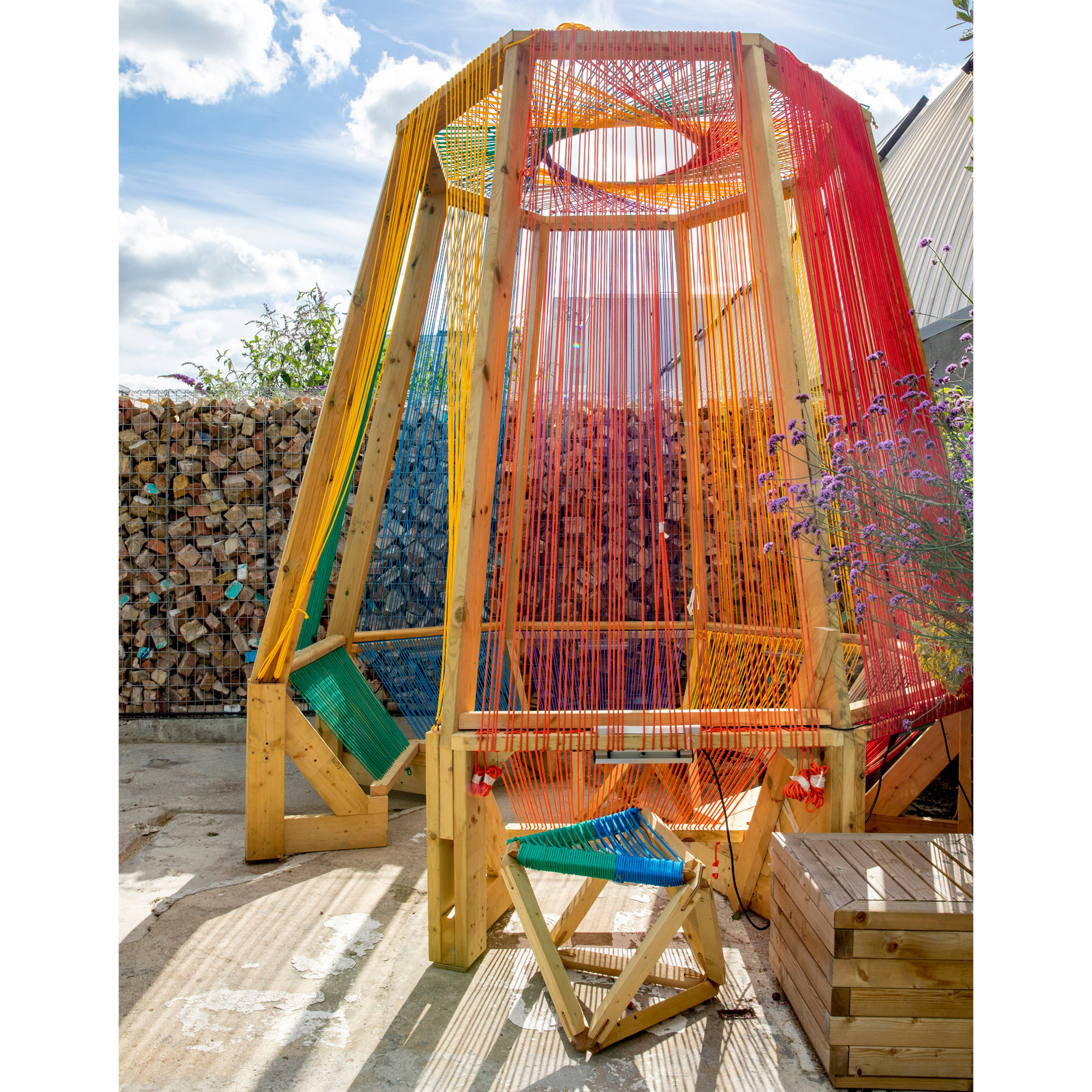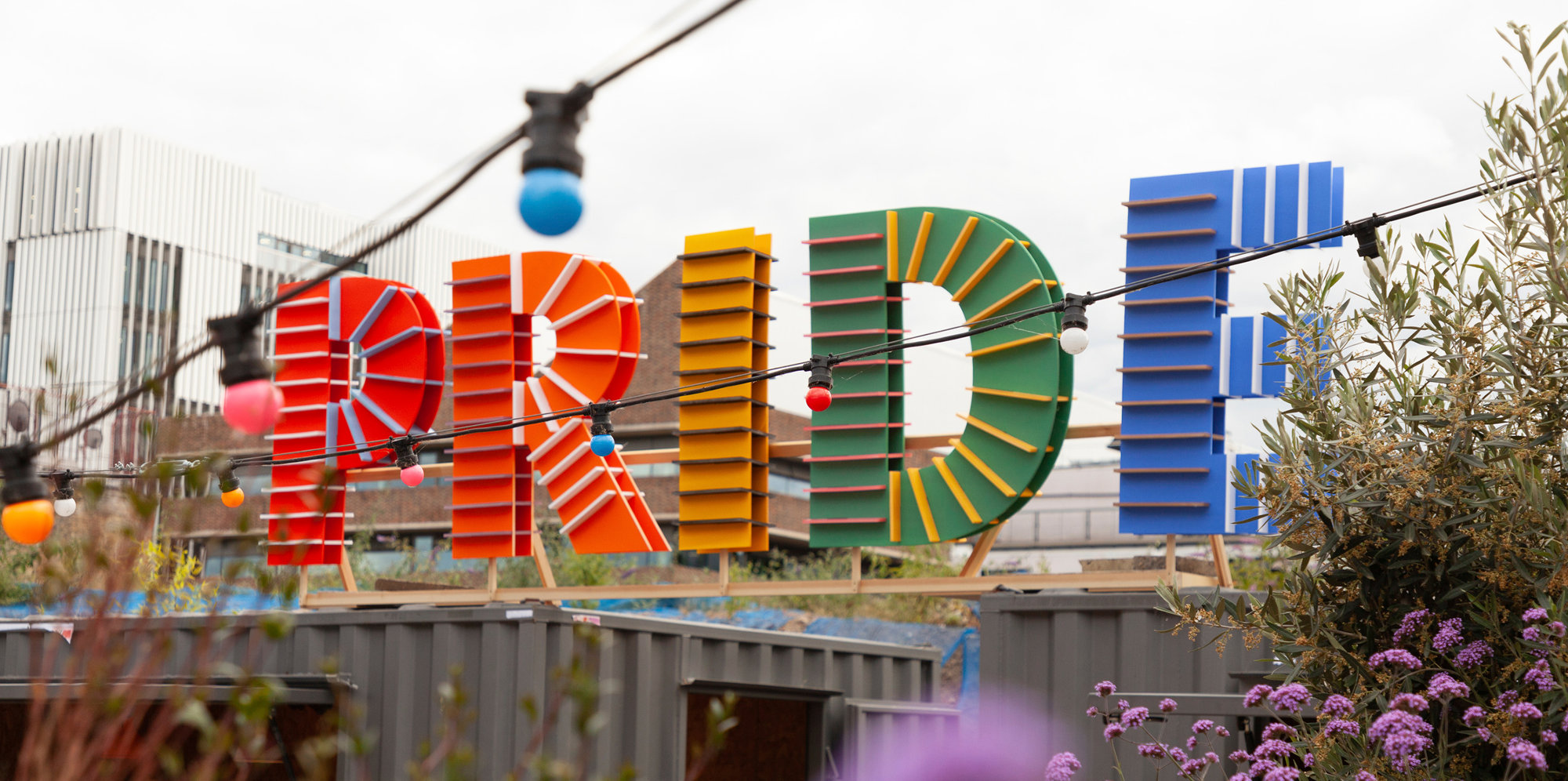In 2021, a team of young architects from Foster + Partners won the Pride Pop Up pavilion competition, organised by Architecture LGBT+ and the London Festival of Architecture.
Located in the gardens of St Anne’s Church in Soho, the ‘Rainbow After the Storm’ pavilion symbolised the various dissonances and synchronicities in the experiences and responses to the two health emergencies – the AIDS pandemic and COVID-19 pandemic – while displaying a message of positivity and togetherness.
Following the success of the pavilion, and in our efforts to reuse building materials, we held an in-house competition - ‘after-life’ - inviting colleagues to design a structure using the dismantled elements of the pavilion.
Judged by a panel of architects and colleagues from our facilities and sustainability departments, the top three designs were selected based on the following criteria:
- Use of materials
2. Simplicity and practicality
3. Aesthetic design quality
4. Creative concept or approach
The winning designs were built on our London campus and revealed to colleagues at a celebratory Pride event in July.
The designers share their inspiration and concept ideas:
‘Particles’ by Shervan Chan, Architectural Assistant
“‘Death’ is the moment when ‘life’ enters ‘after-life’, when life’s existing form transforms to a new one. The body, eventually decomposed into particles, then forms another life. Although the original life can no longer be seen as it was, this doesn’t mean it’s gone, it’s still there in the cycle of life.
Large numbers of existing timbers used in the Pride Pavilion have been broken down and re-constructed into modular units – ‘Particles’. With enough units, these Particles can be recomposed into another pavilion. It is a transformation process of one pavilion to another, that passes the messages of pride and sustainability to a new life.” Shervan Chan
‘Climbing for equality’ by Pablo Diego Pastor, Architectural Assistant
“The ‘Climbing for equality’ sculpture symbolises two things, the first is that the straight community and the LGBTQ+ community can coexist perfectly well while separate, but when they come together, they can create something much better for the world, in the same way that the elements of tensegrity come together to create balance.
On the other hand, this tensegrity also represents the members of an architectural practice - if one element fails, the team is compromised, and therefore the desired result may not be achieved in the same way that if the timber slats or ropes fail, the sculpture may fall. In conclusion, all elements must work together.
The sculpture comes from the concept of tensegrity, in the shape of an Icosahedron, in which the timber slats act as compression elements and the coloured ropes as tension elements.” Pablo Diego Pastor.
‘In Pride of Idleness’ by Akash Changlani, Sustainability Designer and Isik Goren, Sustainability Coordinator
“In present day culture, pride and dignity are associated with work, production, and the self-reflection of being busy; whereas idleness, or “not doing anything” is not necessarily glorified or held in honour.
The main idea behind the pavilion is to offer an enclosed space as a rest pod for employees, to have a place to take intentional breaks while offering views to the terrace and the sky. The pavilion is about taking pride in natural ways of being and living, which we aren’t meant to have shame in the first place.
Pride and dignity in body language is expressed with holding one’s head up high. The idea of ‘In Pride of Idleness’ is materialised as an enclosed frame of an octagon. On each face, the ropes – using colours of pride - rise to unite at the top, forming a spirograph with an opening to the sky. The space offers the user an experience to look up and hold their head up high as a symbol of pride. Meanwhile the ropes on each side face act as semi-transparent screen to make dialogue between indoors and outdoors.” Akash Changlani and Isik Goren.









